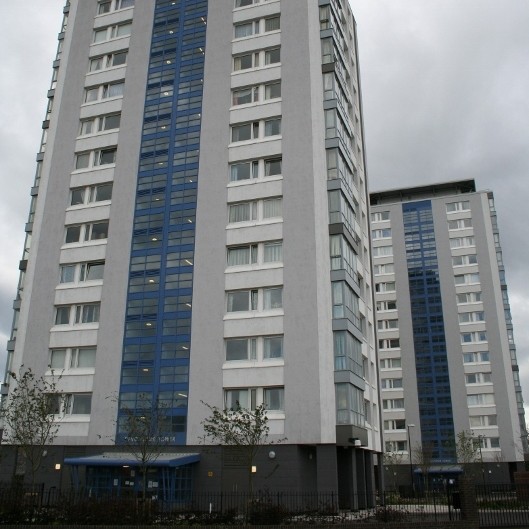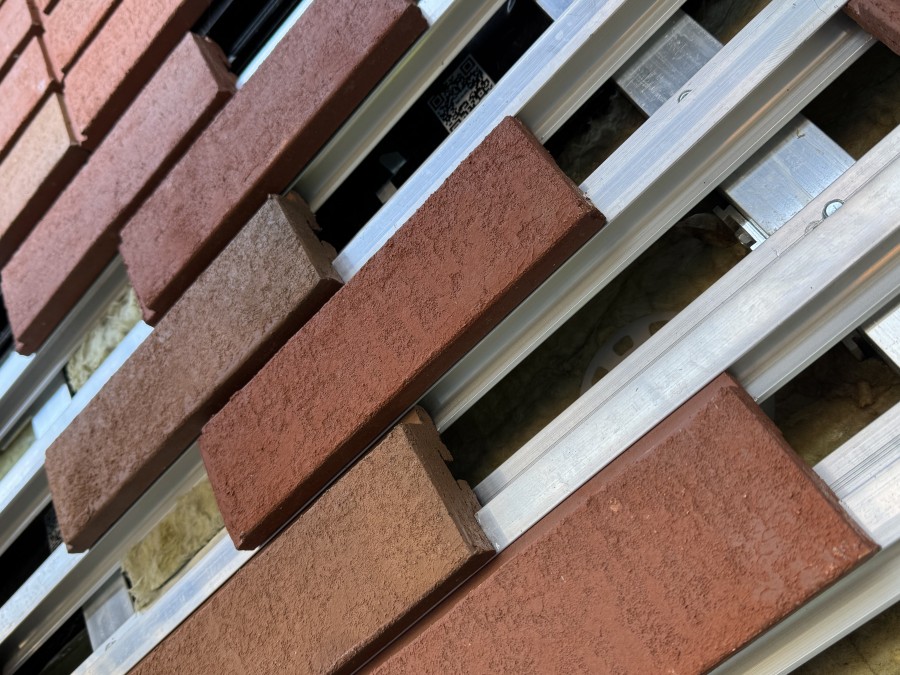
Lanes Group has used its innovative drainage technology to carry out the first ever reline repair of a refuse chute in a residential tower block in England.
Its engineers reached for the skies instead of going underground to refurbish two chutes at the 13-storey Devonshire Tower in Sunderland, Tyne and Wear.
The technique, pioneered by Lanes’ Scottish drainage operation, Castlebrae, is also used to reline drain stacks on listed buildings.
Paul Matthews, Area Development Manager for Lanes for Drains in Tyne and Wear, said: “Relining waste chutes, rather than replacing them, takes less time, is less disruptive, is more cost-effective and creates a robust, long-term repair.
“The approach makes use of a drain repair technique called Cure in Place (CIP), adapted to be carried out vertically. This has created a new application for the technology that we call CIPC, or Cure in Place Chute.”
The CIPC repair at Devonshire House, in Monkwearmouth, Sunderland, was carried out jointly by teams from Lanes for Drains’ Newcastle Depot and Castlebrae for Gentoo Housing Association.
John Turner, Deputy Director of Asset Management at Gentoo said: “The process used by Lanes was very innovative and we would not hesitate to use it again on other high rise towers across the city.
“The works involved relining vertical chutes extending over 30m in length and was delivered on time and to budget. The process was quick, which resulted in limited down time and an improved service for tenants as previous regular blockages are no longer an issue.
“Lanes themselves provided a high quality scheme and level of customer service throughout their time on site and we look forward to working with them again in the future.”
Two chutes were relined, one 33 metres long, the other 36 metres long and both made from salt-glazed clay.
Starting at the bottom of the chute, a four metre tube of flexible glass fibre matting was winched up inside. An inflatable rubber ‘packer’, like an inner tube, was pulled up inside the glass fibre liner and inflated with compressed air, pressing it against the chute.
This was held in place for three hours while the resin hardened, then removed. Another four metre section of liner was then winched up to the next section and the process was repeated until both chutes were fully lined.
The lining technique was even able to cope with a two metre long hole in one of the chute pipes, made to clear persistent blockages. This was filled in with a triple-thickness patch of lining material.
Critical to the technique’s success has been the use of a fire resistant resin, sourced by Castlebrae and a leading lining manufacturer. The liner has passed stringent fire regulation tests and is approved by the fire service for use in high rise buildings.
Alastair Knox, Area Sales Manager at Castlebrae, said: “Over time, refuse chutes like the ones at Devonshire House, become damaged, increasing the risk of blockages caused by snagging.
“This can lead to a range of problems, including fires which can be very serious. Chutes can act like a furnace, causing very high temperatures and generating a lot of smoke.
“At best, this can cause major inconvenience for residents and emergency services who have to respond to chute fires. At worst, chute fires have in the past caused serious injuries and fatalities.
“However, once a chute is relined using our technique, it is completely smooth, significantly reducing blockages, and extremely robust, so the risk of further damage is greatly reduced.”
Before the lining was put in place, the joint Castlebrae and Lanes for Drains team carried out a CCTV survey of the chutes using HS quality video cameras and jetted them clean.
Twelve hoppers, one on each residential floor, where residents put rubbish into the chutes, were also replaced.
Castlebrae has relined chutes in more than 50 residential tower blocks in Scotland, around 20 per cent of all such building north of the border.
Alastair Knox said: “While a good number of high rise public sector residential towers have been demolished over recent years, many others are expected to remain in use for the foreseeable future.
“Chute relining is a proven, cost-efficient and safe way to maintain what is an important part of their service infrastructure. We expect many other public sector housing providers will be interested in the technique.”
The vertical CIP relining technique was first developed to repair cast iron rainwater pipes, encased in stonework on historical listed buildings.
Where the pipes crack or corrode, water can seep into the stonework which then cracks as it freezes and thaws in winter. Rather than strip back the stonework to replace the cast iron rainwater stacks, Lanes can reline the pipe, which is less disruptive and more cost-efficient.




















